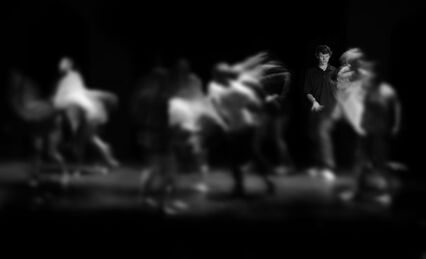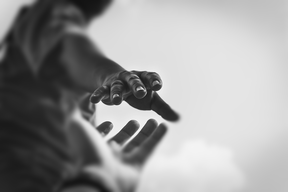We understand that collaborative socialization or cultivation can seem haphazard at times and elusive; but it can be observed and structured to become less random. This is the task of Open Sky as we look to effectuate change one class at a time with individual incarcerated learners, one person at a time toward the formation of a group. Re-integrating the human with their humanness, socializing toward a clearer humanity that is able to connect with and remain connected with the larger social world |

According to an April 2021 report by the Brookings /American Enterprise Institute Working Group on Criminal Reform Report entitled A Better Path Forward for Criminal Justice, "Prison clearly causes major disruptions in the lives of prisoners, their families, and their communities. Nevertheless, a myopic focus on this disruption often ignores the reality of pre-prison life circumstances. In short, the challenge of reentry is more fundamentally a challenge of integration rather than reintegration." This is precisely the challenge that Open Sky addresses. Focused on creating opportunities for participants to develop and practice collaborative socialization in a setting that encourages, and rewards them, for envisioning and then actively stepping into positive self-narratives, Open Sky empowers participants to further their own goals and ambitions, while also making important contributions to the goals and ambitions of their collaborators.

While the idea of being an actor may feel a bit like play time, the process of becoming a conservatory-trained actor requires the cultivation of necessary analytical, empathic, and collaborative skills that are steeped in a calm, centered control of one’s body and imaginative agency toward the collective effort of an ensemble. The creation of an ensemble is the larger part of the mission as participants grow to understand that they are building a team of individuals; literally soloists who are able to work alone, with a partner, several partners or all together for everyone’s ability to both lead and follow and understand the needs of the greater effort. This is accomplished by the conscious development of sensitivity toward the controlled balance of both harmony and discord in creating art as a group through play.
Everything that happens within the boundaries of acting is pretend, is not true; and the goal of acting is to point, with all that is not true, at the truth. |
As part of their contribution to the ensemble as a whole, individual participants are put into contact with their most earnest self. Throughout training, rehearsal and performance, they are called to separate who they are from who they are pretending to be; the necessary push-pull of this practice returns one to a clearer sense of self, daily, and over time, by exhausting one’s imaginative stores day by day, opening space and building new capacity and facility, asking the participant to stretch the parameters of what they are able to perceive and in the process they discover themselves and each other. In supporting the whole, participants essentially become more themselves than they were previously and they realize there is a commonality between and amongst them, and that they benefit from their ability to take part in one another’s growth. These are precisely the muscles that inmates need to develop and actively, regularly exercise - regardless of the future they envision for themselves - if they are to succeed post-incarceration.
|
Over the course of the past few years, we have watched closed off, silent men open and find their way forward with curiosity and wonder at how people behave and the possibility of expressing in time and space what they have observed in human behavior. They each, to a person, re-discover the play impulse through the discipline of acting. Participants soften towards one another and toward the human plight in general. They cultivate an empathy that triggers conversation that drives deeper into questions of human behavior.
Now that we’ve found all this about how people are, how do we show it to others?
Now that we’ve found all this about how people are, how do we show it to others?
|


